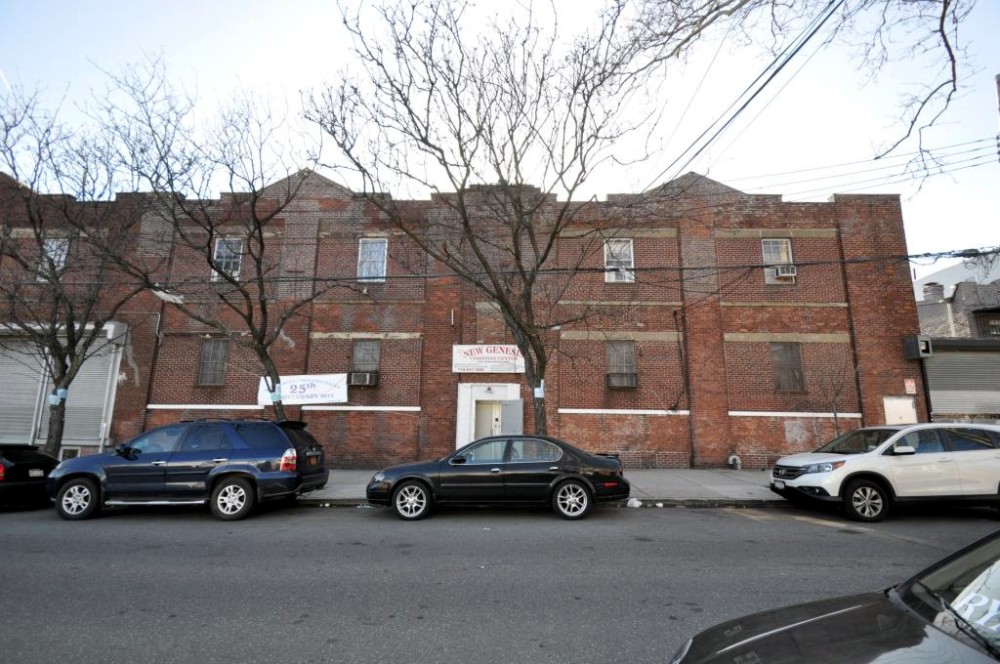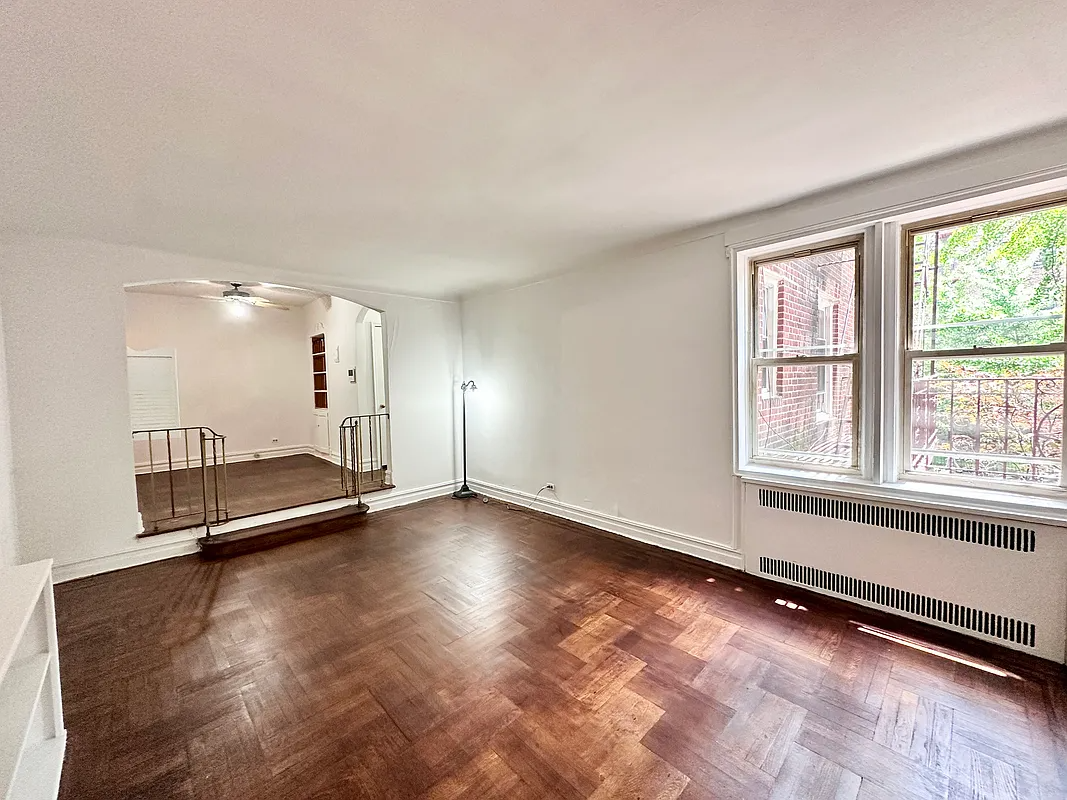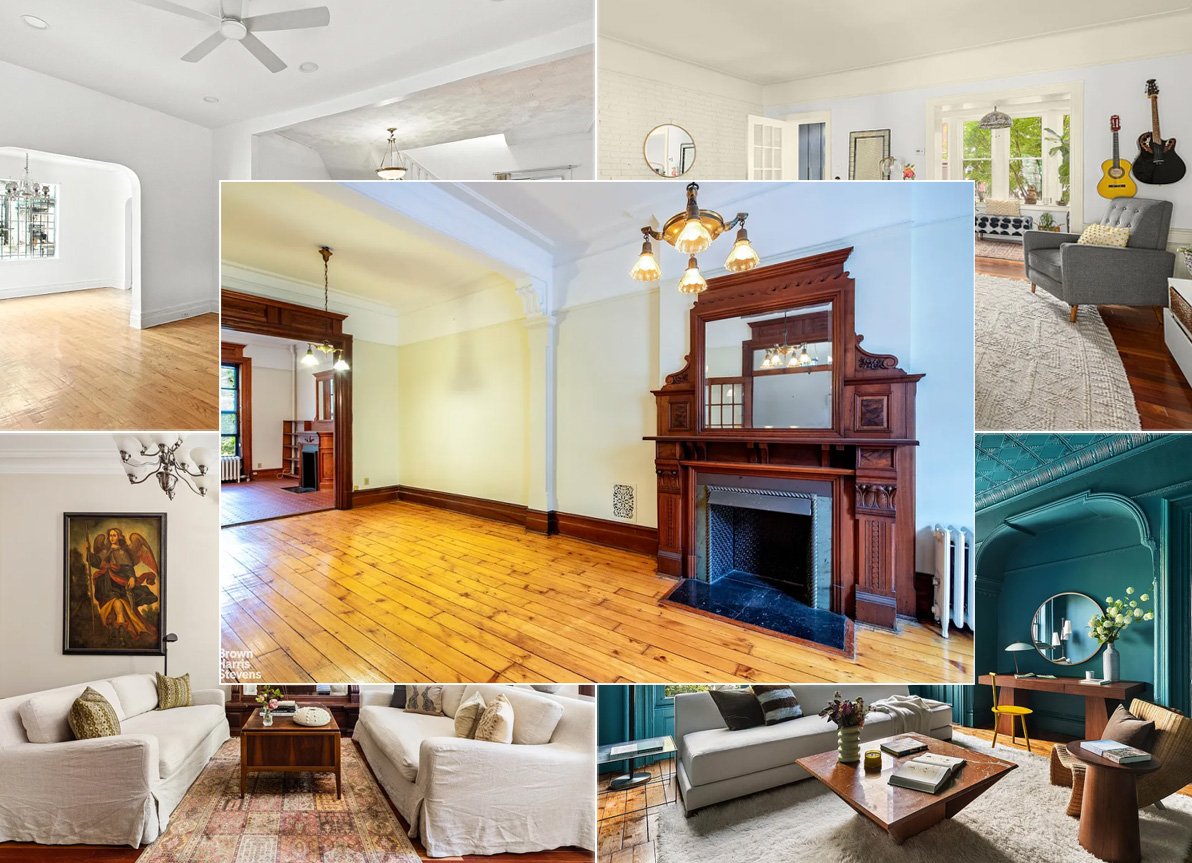Building of the Day: 224-226 Shepherd Avenue, Making a Fortune From "Numbering Machines"
Brooklyn, one building at a time. This factory for the American Numbering Machine Company once shaped the economic life of East New York. Today, the building shapes the spiritual lives of its congregants. Name: Former American Numbering Machine Company, now New Genesis Christian Center Address: 224-226 Shepherd Avenue Cross Streets: Corner of Atlantic Avenue Neighborhood: Cypress…
Brooklyn, one building at a time.
This factory for the American Numbering Machine Company once shaped the economic life of East New York. Today, the building shapes the spiritual lives of its congregants.
Name: Former American Numbering Machine Company, now New Genesis Christian Center
Address: 224-226 Shepherd Avenue
Cross Streets: Corner of Atlantic Avenue
Neighborhood: Cypress Hills
Year Built: 1919
Architectural Style: 19th century brick factory
Architect: Harold G. Dangler
Other works by architect: Manufacturing buildings and garages in Brooklyn, Manhattan and Queens
Landmarked: No
Windows Giving Praise-Worthy Natural Light — Now Bricked-In
The American Numbering Machine Company started on Essex Street in East New York in 1908. By 1912, the company needed a new factory building with more room. Architect Harold Dangler designed and built the factory building at 224 Shepherd Avenue in 1912, and expanded it to its present size in 1919.
A 19th century-style two-story brick factory building, this facility was praised for its many windows, allowing lots of natural light into the work space. Those windows have since been bricked in and much reduced.
Pop quiz: What is a numbering machine?
American Numbering Machine from 1950s, via Etsy
The American Numbering Machine Company
If you are older than the microwave, you may remember the days when banks, offices and libraries had small hand-held stamping machines which had a series of rotors and gears that allowed the user to change the numbers or date on the stamp. They were used to time-stamp a library book, or register your deposit in your savings bank book. Larger examples stamped legal documents, pages in ledgers and other numerical data.
The American Numbering Machine Company was one of the largest companies to make those little gadgets.
The company was incorporated by Edward A. Jarvis, P.S. Riggs and James A. Ferguson of Manhattan. B.B. Conrad was the mechanical genius behind many of their patented machines.
American Numbering Machine Building via East New York Project
They began in 1908 in a building in East New York, and expanded a few blocks away to their own new factory in 1912. That building was expanded further in 1919.
Architect Harold G. Dangler may be rather unknown to us, but in his day he was quite busy designing factories, garages and other industrial buildings in Brooklyn and its environs. His offices were at 215 Montague Street.
Mr. Dangler was also quite well placed with the New York Society of Architects, and was an office holder within that organization in the late ‘teens and early 1920s.
From the American Printer and Lithographer Magazine, 1919
By the 1920s, the company had 150 employees who rolled out 400 to 500 of their machines a week. In addition to the small hand-held stampers, they also made more complicated table-sized machines and time stamping machines for banks, law offices, government office use, libraries and department stores.
Jobs here included die casting, drill press, machine stamping, metal plating, assembly and calibration. It was actually quite complex and involved.
As can be imagined, the company had its best years during World War II, when they also made machines and tools for military use.
Building can be seen in background — 1941 tax photo, via East New York Project
The company was in full operation here in Cypress Hills until 1971. The personal computer and printing technology took over most of their functions as we moved into the 21st century. However, they still exist in digital form — the methodology of the counting machines was actually written into Acrobat’s counting algorithms.
In 1971, the building was sold and then sold again, both times to other manufacturing companies. In 1997, the New Genesis Christian Center purchased the building. In 2003, they began sharing or co-owning it with the Followers of Jesus Mennonite Church.
Top photo by Christopher Bride for PropertyShark
Google Maps











What's Your Take? Leave a Comment